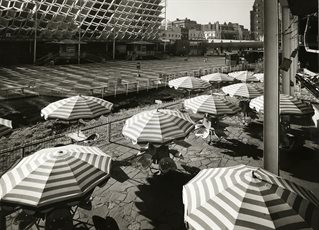International recognition for the University of Brighton Design Archives' influence on archival practices
When, in 2018, the impact of the University of Brighton Design Archives was endorsed by the prestigious Sir Misha Black Award for Innovation in Design Education, the awards committee cited the Design Archives’ pioneering use of digital technologies since the 1990s, recognising that the university is at the forefront of the history and interpretation of design in the United Kingdom. Key funding bodies, including the Getty Institute, the Higher Education Funding Council and the Arts and Humanities Research Council, have recognised the international significance of the University of Brighton Design Archives’ work.
Establishing a position of influence in archive research and practice, University of Brighton Design Archives has become a model and a reference point for other archives, cultural organisations and individual artists, designers, curators, historians and researchers. Each year over 200 national and international researchers, designers and practitioners, spanning five continents, have consulted with staff, while its collecting policy has expanded categories of representation within its holdings, making them intellectually and creatively relevant to professional and academic researchers from around the globe.
Its work has driven the development and practices of other design archives and the wider heritage sector. Exploring British Design, a project conceived and run in collaboration with the UK Archives Hub, made a specific, practical contribution to archival practice based around the power of creating structured and semantic data, and upscaling connectivity across collections. The findings of the research has enabled an approach that challenged traditional methodologies for archival description, the principles of which were then embedded within a re-design of the Archives Hub service and data model, benefitting hundreds of archives with content accessed millions of times each year.

The Festival of Britain, South Bank, London, 1951. Catalogue DCA-30-1-FOB-CO-12. Design Council Archive, University of Brighton Design Archives.